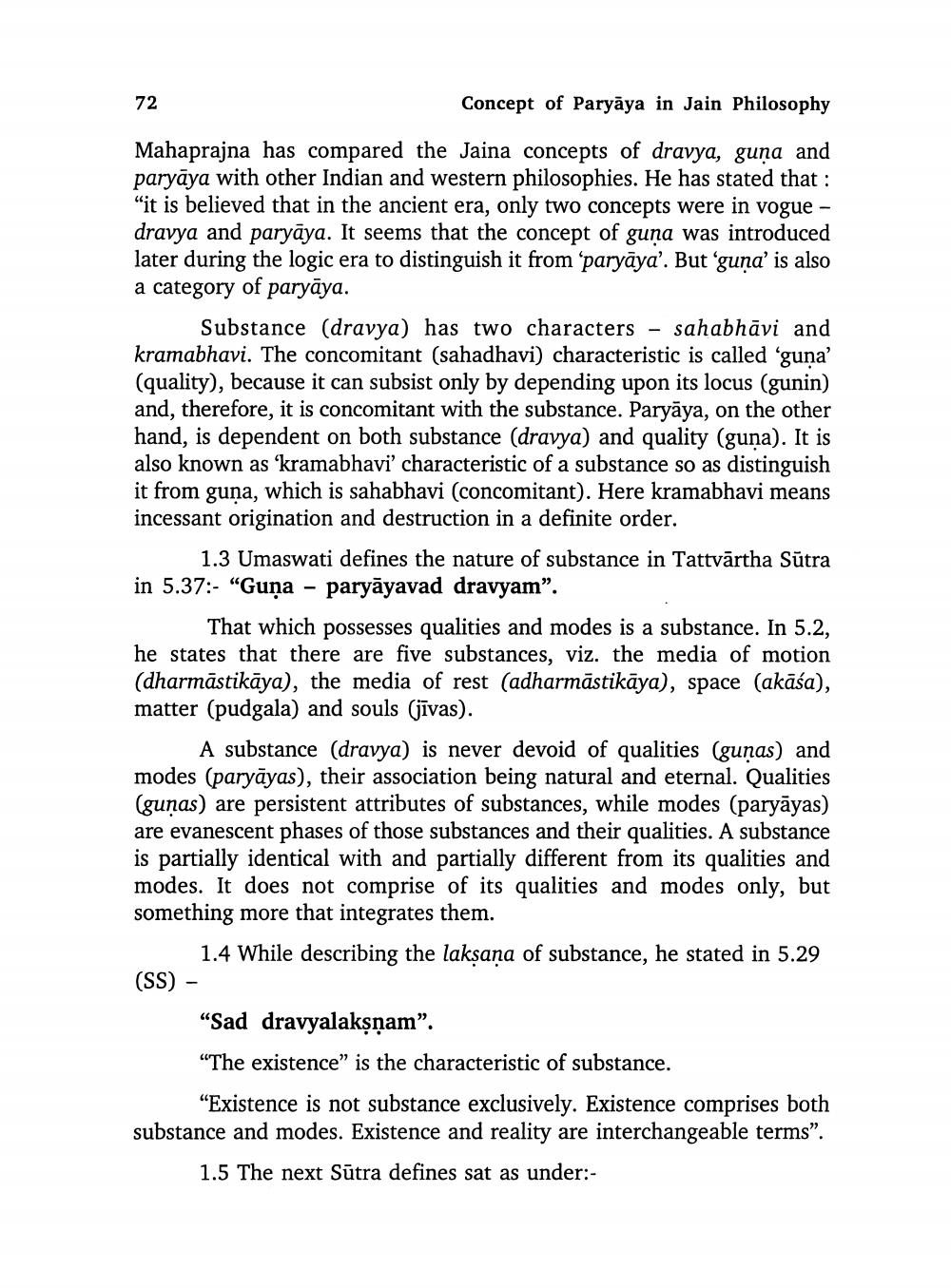________________ 72 Concept of Paryaya in Jain Philosophy Mahaprajna has compared the Jaina concepts of dravya, guna and paryaya with other Indian and western philosophies. He has stated that : "it is believed that in the ancient era, only two concepts were in vogue - dravya and paryaya. It seems that the concept of guna was introduced later during the logic era to distinguish it from 'paryaya'. But 'guna' is also a category of paryaya. Substance (dravya) has two characters - sahabhavi and kramabhavi. The concomitant (sahadhavi) characteristic is called 'guna' (quality), because it can subsist only by depending upon its locus (gunin) and, therefore, it is concomitant with the substance. Paryaya, on the other hand, is dependent on both substance (dravya) and quality (guna). It is also known as 'kramabhavi' characteristic of a substance so as distinguish it from guna, which is sahabhavi (concomitant). Here kramabhavi means incessant origination and destruction in a definite order. 1.3 Umaswati defines the nature of substance in Tattvartha Sutra in 5.37:- "Guna - paryayavad dravyam". That which possesses qualities and modes is a substance. In 5.2, he states that there are five substances, viz. the media of motion (dharmastikaya), the media of rest (adharmastikaya), space (akasa), matter (pudgala) and souls (jivas). A substance (dravya) is never devoid of qualities (gunas) and modes (paryayas), their association being natural and eternal. Qualities (gunas) are persistent attributes of substances, while modes (paryayas) are evanescent phases of those substances and their qualities. A substance is partially identical with and partially different from its qualities and modes. It does not comprise of its qualities and modes only, but something more that integrates them. 1.4 While describing the laksana of substance, he stated in 5.29 (SS) - "Sad dravyalaksnam". "The existence" is the characteristic of substance. "Existence is not substance exclusively. Existence comprises both substance and modes. Existence and reality are interchangeable terms". 1.5 The next Sutra defines sat as under:




